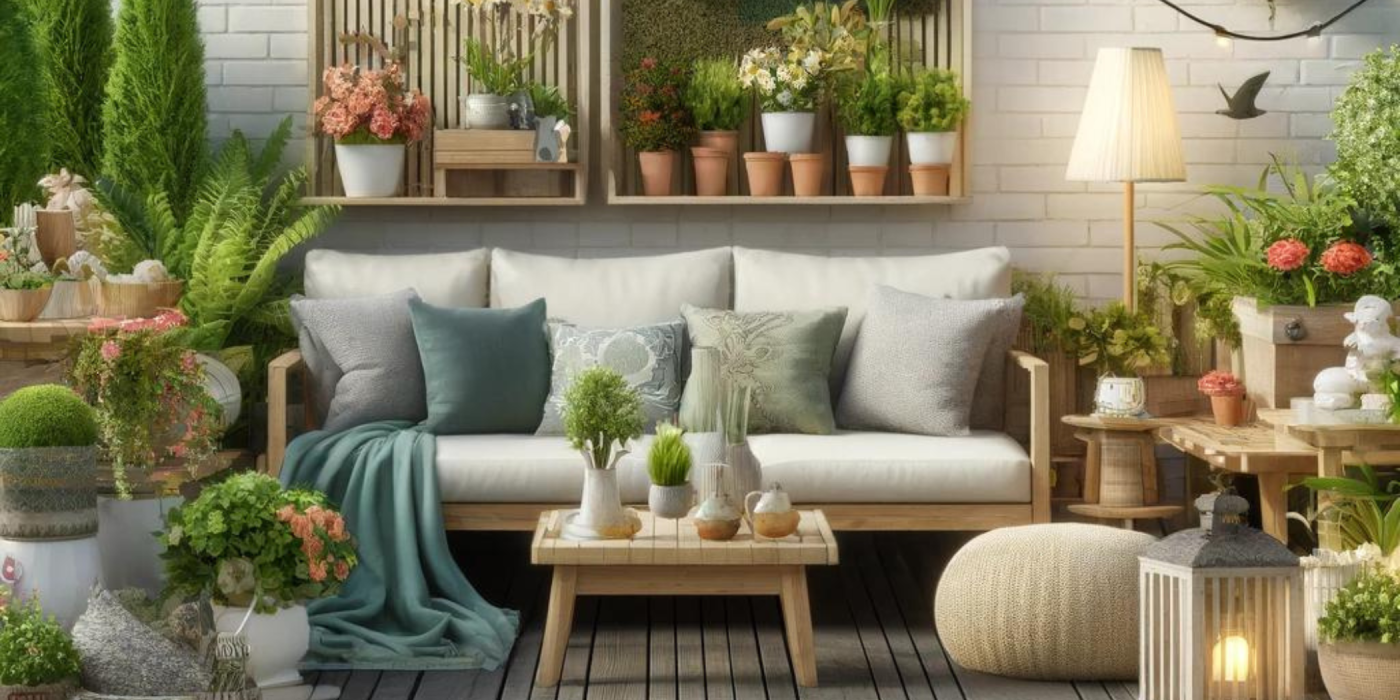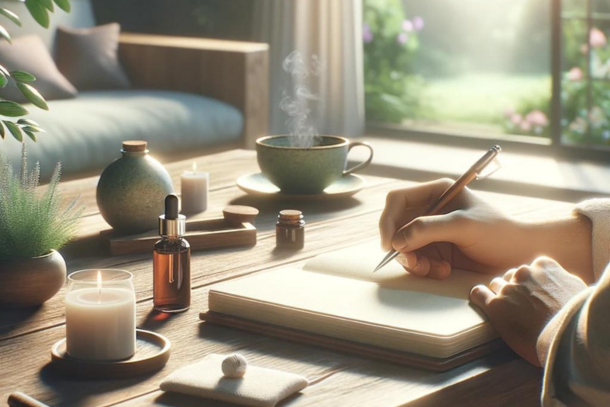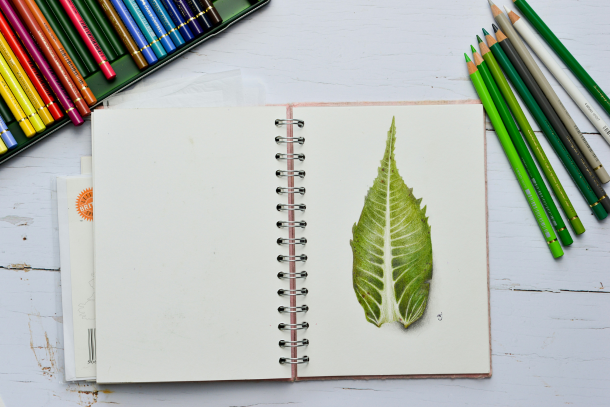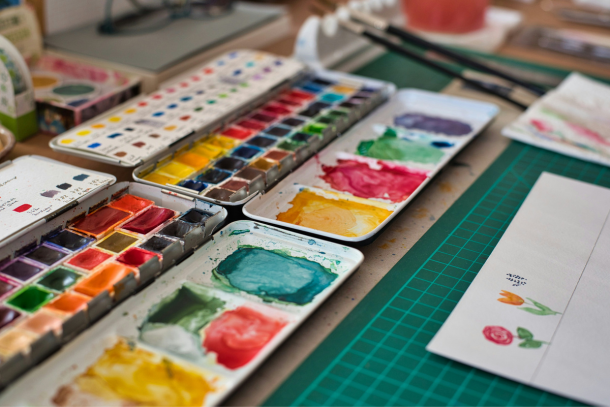How to Create a Relaxing Outdoor Space for Summer

Creating a relaxing outdoor space during the summer months is more important than ever.
With longer days and warmer weather, our gardens, patios, and balconies become extensions of our living areas, offering a perfect retreat from the hustle and bustle of everyday life. A well-designed outdoor space not only enhances the aesthetic appeal of your home but also provides a sanctuary for relaxation and socialising.
Benefits of Spending Time Outdoors
Spending time outdoors has numerous benefits for both mental and physical well-being. Exposure to natural light increases the production of serotonin, a hormone that boosts mood and helps to create a sense of calm and happiness. Fresh air and sunlight are also essential for producing vitamin D, which supports the immune system and promotes bone health.
Engaging in outdoor activities, whether it’s gardening, dining al fresco, or simply lounging in a comfortable chair, encourages physical movement and can help reduce stress levels. The natural environment provides a peaceful backdrop that can enhance mindfulness and improve overall mental clarity. Additionally, outdoor spaces offer an excellent opportunity for social interaction, providing a venue for family gatherings, barbecues, and evening get-togethers with friends.
Assess Your Outdoor Space
Evaluate Your Space
Before you begin transforming your outdoor area, it's crucial to evaluate the space you have. Start by measuring the dimensions of your outdoor area. This will help you understand the scale of your project and make informed decisions about furniture, plants, and other elements.
Consider the existing features and their conditions. Take note of any permanent structures, such as sheds, fences, or patios, as well as any natural elements like trees or shrubs. Assess their condition and decide whether they need repair, replacement, or enhancement.
Identify the areas with the most sunlight and shade. This is essential for planning the placement of plants and seating areas. Some plants thrive in full sun, while others prefer shade, so knowing where these spots are will help you choose the right flora for your garden. Additionally, understanding the sun and shade patterns will allow you to create comfortable seating areas that are neither too hot nor too shaded.
Define Your Purpose
Determining how you intend to use the space is a fundamental step in creating a relaxing outdoor area. Think about the primary activities you want to enjoy in your garden. Do you envision it as a space for dining with family and friends, lounging and reading, or perhaps gardening and growing your own vegetables?
Prioritise your needs and desires for the outdoor area. If you enjoy entertaining, a spacious dining area with a large table and comfortable chairs might be essential. If relaxation is your goal, consider incorporating cosy seating with plenty of cushions and perhaps a hammock or daybed.
Think about the number of people you want to accommodate. If you regularly host gatherings, ensure there is ample seating and space for guests to move around comfortably. Conversely, if the space is mainly for personal use or small family gatherings, you might focus on creating a more intimate and cosy atmosphere.
By thoroughly assessing your outdoor space and clearly defining its purpose, you lay the groundwork for a well-planned and functional garden that meets all your summer relaxation needs.
Plan Your Design
Choose a Theme
Selecting a theme that reflects your personal style is an essential step in creating a cohesive and inviting outdoor space. Whether you prefer a rustic, modern, or tropical aesthetic, your theme will guide your design choices and ensure a harmonious look.
Start by gathering inspiration from various sources. Magazines dedicated to home and garden design can provide a wealth of ideas, showcasing the latest trends and timeless classics. Online platforms such as Pinterest are also invaluable for discovering a multitude of styles and creative solutions. Save images that resonate with you and take note of recurring elements that appeal to your taste.
Creating a mood board is a practical way to visualise your ideas and bring your theme to life. This can be a physical board where you pin magazine cut-outs, fabric swatches, and paint samples, or a digital board using tools like Pinterest or Canva. A mood board will help you see how different elements work together and ensure that your design choices align with your overall vision.
Layout and Zoning
Once you have a clear theme in mind, the next step is to plan the layout and zoning of your outdoor space. Dividing your area into functional zones will help you make the most of the space and create a seamless flow.
Identify the primary functions you want your outdoor space to serve. Common zones include dining areas for alfresco meals, lounging areas for relaxation, and garden zones for plants and flowers. By clearly defining these zones, you can ensure that each area serves its purpose effectively.
Plan the layout to ensure smooth flow and accessibility between zones. Think about how you and your guests will move through the space and arrange pathways accordingly. Ensure that furniture placement allows for easy movement and that key areas are easily accessible.
Use visual markers to delineate different zones. Rugs can anchor a dining area, making it distinct from a lounging zone. Planters and greenery can act as natural dividers, adding beauty while defining boundaries. Furniture arrangement also plays a crucial role; strategically placed seating can create an inviting and functional layout.
By carefully choosing a theme and thoughtfully planning your layout and zones, you can transform your outdoor space into a cohesive and relaxing haven for the summer.
Select Comfortable and Stylish Furniture
Creating a relaxing outdoor space for summer begins with selecting the right furniture. Ensuring that your outdoor furniture is both comfortable and stylish will significantly enhance your enjoyment of the space.
Invest in Quality Furniture
Choosing durable and weather-resistant materials is crucial for outdoor furniture, as they need to withstand the elements. Materials such as teak, aluminium, and rattan are excellent choices. Teak, for example, is naturally resistant to water and insects, making it a long-lasting option. Aluminium furniture is lightweight, rust-resistant, and requires minimal maintenance. Rattan, particularly synthetic rattan, offers a stylish, natural look while being durable and easy to clean.
Opt for furniture that balances comfort and style. Look for pieces with plush, supportive cushions and ergonomic designs that invite you to sit and relax. Stylish furniture can transform your outdoor space into an extension of your home, reflecting your personal taste. Consider modular furniture, which offers flexibility and can be easily rearranged to suit different occasions and needs. Modular sets can include sofas, chairs, and tables that fit together in various configurations, allowing you to adapt your seating area as needed.
Add Cushions and Throws
Cushions and throws are essential for adding comfort and a touch of style to your outdoor furniture. Select cushions and throws made from weather-resistant fabrics such as acrylic or polyester, which are designed to withstand moisture, sunlight, and mildew. These materials are durable and maintain their colour even after prolonged exposure to the elements.
Use colours and patterns that complement your overall theme. Whether you prefer bold, vibrant hues or soft, neutral tones, choosing the right textiles can tie your design together and create a cohesive look. Patterns such as stripes, florals, or geometric prints can add visual interest and personality to your space.
Ensure that the cushions and throws are easy to clean and maintain. Removable, washable covers are a practical choice, as they allow you to keep your outdoor seating area looking fresh and inviting with minimal effort. Regularly cleaning your cushions and throws will help prolong their life and keep them looking their best.
By investing in quality furniture and adding stylish, comfortable cushions and throws, you can create a welcoming and relaxing outdoor space perfect for enjoying the summer months.
Create Shade and Shelter
Install Shade Solutions
When creating a relaxing outdoor space for summer, it's crucial to provide ample shade to protect against the sun's intense rays. Here are some effective shade solutions:
Use Umbrellas, Pergolas, or Awnings
- Umbrellas: Large patio umbrellas are versatile and can be easily moved to provide shade where needed. They come in various sizes and styles to suit different aesthetics.
- Pergolas: These structures not only offer shade but also add a stylish architectural element to your garden. You can enhance them with climbing plants like wisteria or jasmine for added natural shade and fragrance.
- Awnings: Awnings, either fixed or retractable, can provide substantial shade over patios and windows. They are particularly useful for creating shaded dining or lounging areas.
Consider Retractable Options for Flexibility
Retractable awnings and canopies offer the flexibility to adjust the amount of shade based on the time of day and weather conditions. This feature allows you to enjoy the sun when desired and create shade when necessary, ensuring maximum comfort during peak sunlight hours.
Position Shade Structures to Maximise Comfort
Carefully position your shade structures to maximise their effectiveness. Consider the direction of the sun throughout the day and place umbrellas, pergolas, or awnings in areas that receive the most direct sunlight. This strategy will help keep your outdoor space cool and comfortable during the hottest parts of the day.
Add Shelter for Rain
British summers can be unpredictable, with sudden showers interrupting otherwise pleasant days. Incorporating rain shelters ensures that your outdoor space remains usable regardless of the weather.
Incorporate Waterproof Canopies or Gazebos
- Waterproof Canopies: These are ideal for creating a dry, shaded area. They are available in various sizes and can be easily assembled and disassembled as needed.
- Gazebos: Permanent or semi-permanent gazebos provide a more robust solution for rain protection. They can be equipped with side panels or curtains for additional shelter.
Use Outdoor Curtains or Screens for Additional Protection
Outdoor curtains or screens can be added to pergolas, gazebos, or canopies to provide extra protection from both sun and rain. These additions can also enhance privacy and add a touch of elegance to your outdoor space.
Ensure That Shelters Are Sturdy and Can Withstand Windy Conditions
It's essential to ensure that any shelters you install are sturdy enough to withstand windy conditions. Use high-quality materials and secure structures firmly to the ground. For temporary shelters like umbrellas and canopies, consider weights or anchors to prevent them from being blown over.
By incorporating effective shade and shelter solutions, you can create a versatile and comfortable outdoor space that can be enjoyed throughout the summer, regardless of the weather.
Enhance with Greenery
Choose Plants and Flowers
Selecting the right plants and flowers is crucial for creating a lush and inviting outdoor space. Start by choosing plants that thrive in your local climate and are easy to maintain. Native plants are often the best choice as they are well-adapted to the local conditions and require less water and care. Consider a mix of perennials and annuals to ensure year-round interest and variety.
Mix a variety of flowers, shrubs, and herbs to add visual interest and create a dynamic landscape. Flowers like marigolds, geraniums, and petunias provide vibrant colours and attract pollinators, while shrubs like lavender and rosemary add structure and fragrance. Herbs such as basil, mint, and thyme not only add greenery but also offer practical benefits for cooking and natural remedies.
Using pots and planters is an excellent way to add height and dimension to your garden. They allow for flexibility in arranging plants and can be moved around to suit your design preferences. Choose containers in various sizes and styles to create layers and depth. Terra cotta pots, wooden planters, and decorative ceramic containers can all add charm and character to your space.
Create Vertical Gardens
Vertical gardens are a fantastic way to maximise space, especially in smaller gardens or urban settings. Utilise wall-mounted planters or trellises to grow plants upwards, making the most of your available space. These structures can transform bare walls into vibrant green features and add a unique element to your garden design.
Grow climbing plants like ivy, jasmine, or roses on trellises or pergolas to create a lush, green backdrop. These plants can cover large areas and provide privacy and shade. Jasmine and roses also add delightful scents, enhancing the sensory experience of your outdoor space.
Incorporate hanging baskets to add greenery at different heights. Hanging baskets are perfect for trailing plants like fuchsias, begonias, and trailing petunias, which can cascade down and create a waterfall of colour. They are also ideal for herbs such as parsley, oregano, and trailing rosemary, providing easy access for culinary use.
By enhancing your outdoor space with a variety of plants and creative planting techniques, you can create a relaxing, verdant retreat that invites you to unwind and enjoy the beauty of nature.
Lighting for Ambience
Install Outdoor Lighting
Creating the right ambience with lighting is essential for enjoying your outdoor space during summer evenings. Using a variety of lighting options can add both functionality and charm to your garden.
Use a Mix of Lighting Options
Incorporate a combination of string lights, lanterns, and solar lights to add depth and interest to your outdoor space. String lights are perfect for draping over pergolas, along fences, or through trees, creating a magical, twinkling effect. Lanterns, whether hung or placed on tables, add a rustic, cosy touch, while solar lights are excellent for marking pathways and garden borders, providing subtle illumination without the need for electrical wiring.
Focus on Key Areas
Ensure you focus lighting on essential areas such as pathways, dining areas, and lounging zones. Pathway lighting not only enhances safety but also guides guests through your garden, creating a welcoming atmosphere. Illuminating dining areas allows for enjoyable, extended evening meals, while soft lighting in lounging zones creates a serene environment for relaxation.
Choose Warm, Soft Lighting
Opt for warm, soft lighting to foster a cosy and inviting atmosphere. Warm white bulbs mimic the gentle glow of candlelight, which is ideal for creating a relaxing outdoor setting. Avoid harsh, bright lights as they can disrupt the tranquil mood you are aiming to achieve.
Consider Eco-Friendly Options
Opt for Solar-Powered Lights
Solar-powered lights are an excellent eco-friendly option to reduce energy consumption. They charge during the day and automatically illuminate at dusk, offering a hassle-free and sustainable lighting solution.
Use LED Bulbs
LED bulbs are highly efficient and have a longer lifespan compared to traditional incandescent bulbs. Using LED lights will save energy and reduce the need for frequent replacements, making them both a cost-effective and environmentally friendly choice.
Consider Motion-Sensor Lights
For added security, consider installing motion-sensor lights. These lights only activate when movement is detected, which conserves energy while providing illumination when needed. They are particularly useful for entryways and driveways, enhancing both convenience and safety.
By thoughtfully selecting and arranging your outdoor lighting, you can create a beautifully lit garden that enhances your outdoor space's functionality and ambience, making it a perfect retreat for summer evenings.
Incorporate Water Features
Add a Water Element
Adding a water feature to your outdoor space can significantly enhance its tranquillity and aesthetic appeal. Whether you opt for a small fountain, a birdbath, or a pond, incorporating water elements can transform your garden into a serene oasis.
-
Install a Small Fountain: A small fountain can be a focal point in your garden. Choose a design that complements your overall theme, whether it's modern, rustic, or traditional. Fountains are available in a variety of materials such as stone, metal, and ceramic, allowing you to select one that fits your style.
-
Birdbath: A birdbath not only adds an elegant touch to your garden but also attracts birds, bringing life and movement to your space. Place it in a visible spot where you can enjoy watching the birds visit and bathe.
-
Pond: If you have the space and resources, installing a pond can be a stunning addition to your garden. Ponds can house aquatic plants and fish, creating a diverse ecosystem. Ensure your pond is easy to maintain by including a filtration system to keep the water clean.
When choosing a water feature, consider the size and scale of your space to ensure it fits harmoniously without overwhelming the area. Maintenance is also crucial; opt for features that are easy to clean and require minimal upkeep.
Benefits of Water Features
Incorporating water features into your garden offers several benefits beyond their visual appeal.
-
Soothing Sound: The sound of flowing water is inherently soothing and can help mask unwanted noise from traffic or neighbours. This calming effect makes your garden a perfect place for relaxation and meditation.
-
Attract Wildlife: Water features attract various forms of wildlife, such as birds, butterflies, and beneficial insects. This not only adds to the natural beauty of your garden but also promotes biodiversity.
-
Cooling Effect: On hot summer days, water features can help cool the surrounding area. The evaporation of water from the surface can reduce the ambient temperature, making your outdoor space more comfortable during the heat.
-
Natural Ambience: The presence of water enhances the natural ambience of your garden. The gentle movement and reflections on the water surface add a dynamic element that can be both visually and audibly pleasing.
By incorporating water features, you can create a more inviting and peaceful outdoor space that you, your family, and local wildlife can enjoy.
Personal Touches and Decor
Add Decorative Elements
Adding personal touches and decorative elements to your outdoor space can transform it from a simple garden or patio into a cosy and inviting retreat. Start by using outdoor rugs to define different areas and add a layer of comfort underfoot. Decorative pillows are an excellent way to introduce colour and texture, making seating areas more inviting and stylish. Look for weather-resistant materials to ensure they withstand the elements.
Incorporating personal items can make the space feel uniquely yours. Consider adding framed family photos or handmade crafts that reflect your personality and interests. These elements add a personal touch and make the outdoor area feel like an extension of your home. When choosing decor items, opt for durable and weather-resistant materials to ensure they last through the seasons.
Create a Cosy Atmosphere
Creating a cosy atmosphere in your outdoor space is essential for making it a place where you and your guests will want to spend time. One way to achieve this is by including outdoor candles or lanterns to provide soft, ambient lighting. A fire pit can be a focal point for gatherings, offering both warmth and a place to toast marshmallows on cool evenings.
Textiles like blankets and cushions are perfect for adding warmth and comfort to your outdoor furniture. Choose materials that are suitable for outdoor use and can withstand exposure to the elements. These soft furnishings make it easy to create a snug environment where people can relax and unwind.
Arrange your furniture to encourage conversation and relaxation. Position seating in a way that facilitates easy interaction and ensures everyone has a comfortable spot. By thoughtfully arranging your outdoor space and incorporating personal touches, you can create a charming and inviting area perfect for enjoying the summer months.
Maintenance Tips
Regular Cleaning and Upkeep
Keep Furniture and Cushions Clean and Free from Dirt
Maintaining the cleanliness of your outdoor furniture and cushions is essential for ensuring their longevity and comfort. Regularly wipe down furniture surfaces with a damp cloth to remove dust and dirt. For deeper cleans, use a mild soap solution and a soft brush to scrub away grime. Cushions should be shaken out frequently and spot cleaned as needed. If your cushions have removable covers, machine wash them according to the manufacturer's instructions to keep them looking fresh.
Regularly Water and Prune Plants to Maintain Their Health
To keep your garden thriving, it is vital to establish a consistent watering schedule. Water plants early in the morning or late in the evening to reduce evaporation. Pay attention to the specific needs of each plant species, ensuring they receive the right amount of water. Regular pruning is also necessary to encourage healthy growth and prevent plants from becoming overgrown. Remove any dead or diseased foliage promptly to maintain the overall health and appearance of your garden.
Check and Maintain Lighting and Water Features
Outdoor lighting and water features add ambience and serenity to your space, but they require regular maintenance. Check your lighting fixtures for any signs of wear or damage and replace bulbs as needed. Clean solar panels to ensure maximum efficiency. For water features, such as fountains or ponds, regularly remove debris and clean the pumps to keep the water flowing smoothly. This will help prevent any build-up of algae or bacteria.
Seasonal Adjustments
Store or Cover Furniture During Harsh Weather Conditions
To protect your outdoor furniture from the elements, store it in a shed or garage during harsh weather conditions. If storage space is limited, use durable furniture covers to shield your pieces from rain, snow, and frost. This will help prevent damage and extend the life of your furniture.
Refresh Plants and Flowers Seasonally to Keep the Space Vibrant
Keeping your garden vibrant and colourful requires seasonal adjustments. Refresh your plantings to reflect the changing seasons by adding new flowers and plants that thrive in the current weather conditions. This not only enhances the visual appeal of your outdoor space but also ensures that your garden remains healthy and lively year-round.
Update Decor Elements to Reflect Seasonal Changes
Updating your decor to match the seasons can breathe new life into your outdoor space. Swap out cushions, rugs, and decorative items to reflect the colours and themes of the current season. Incorporate elements like autumnal wreaths, spring blossoms, or summer lanterns to keep your outdoor area looking fresh and inviting throughout the year.
By following these maintenance tips, you can ensure that your outdoor space remains a relaxing and enjoyable haven, no matter the season. Regular upkeep and thoughtful adjustments will help you make the most of your garden, providing a beautiful and functional area to unwind and entertain.
Conclusion
Recap of the Key Steps to Create a Relaxing Outdoor Space for Summer
Creating a relaxing outdoor space for summer involves several key steps. First, assess your outdoor area by evaluating its dimensions, existing features, and sunlight exposure. Define your purpose for the space, whether it’s for dining, lounging, or gardening, and plan your design accordingly. Choose a theme that reflects your personal style and create a layout that divides your space into functional zones.
Selecting comfortable and stylish furniture is crucial. Invest in quality, weather-resistant pieces, and enhance them with cushions and throws. Provide shade and shelter with umbrellas, pergolas, or waterproof canopies to ensure comfort during both sunny and rainy days.
Enhancing your space with greenery is essential. Choose plants and flowers that thrive in your climate and consider vertical gardening options to maximise space. Lighting plays a significant role in creating ambience; use a mix of outdoor lighting options, focusing on key areas, and consider eco-friendly choices like solar-powered lights.
Incorporate water features to add a soothing element to your space. Whether it’s a small fountain or a birdbath, water features enhance relaxation and attract wildlife. Add personal touches and decor to make the space uniquely yours, using outdoor rugs, decorative pillows, and art pieces.
Related to this article are the following:
I do hope you have enjoyed this article and hope that you will subscribe to my newsletter so you can get the latest information about all things naturally relaxing.
Stay in touch, join the Naturally Relaxing Newsletter
Newsletter Signup
Post Your Comments
or post as a guest
Be the first to comment.
Latest articles in Lifestyle

DIY Natural Beauty Treatments for Glowing Summer Skin

10 Natural Remedies to Combat Summer Allergies

Mindfulness Techniques to Reduce Stress in Your Daily Life

Hydration and Wellness: Natural Ways to Stay Hydrated in Summer

Nurturing Serenity: Mastering the Art of Nature Drawing for Relaxation and Mindfulness






